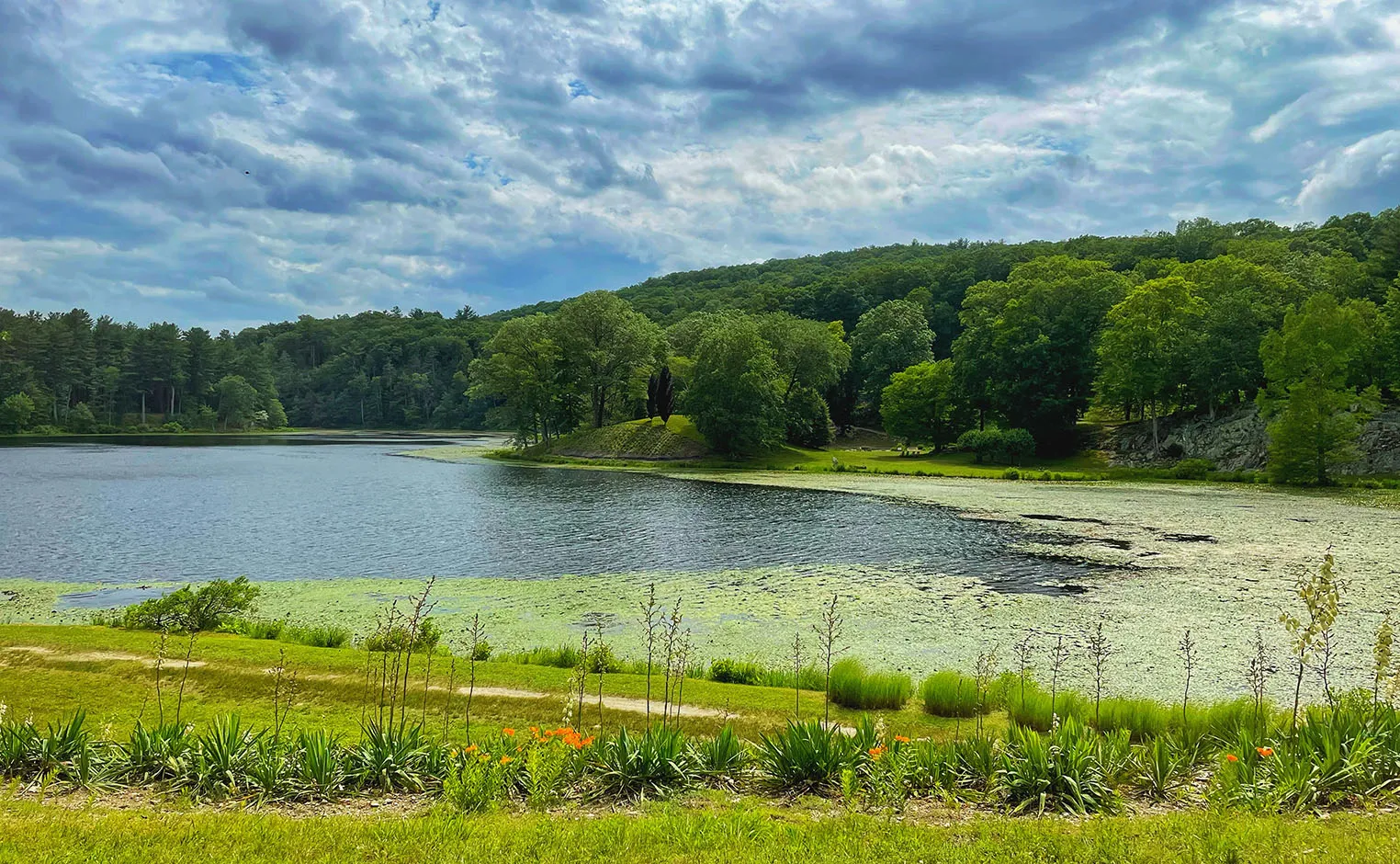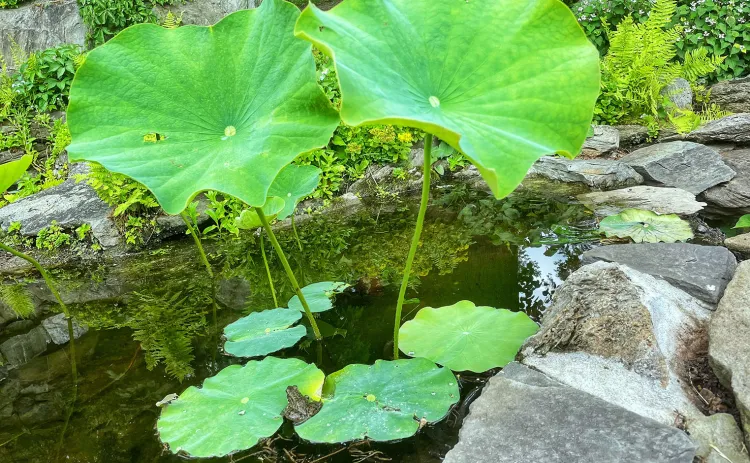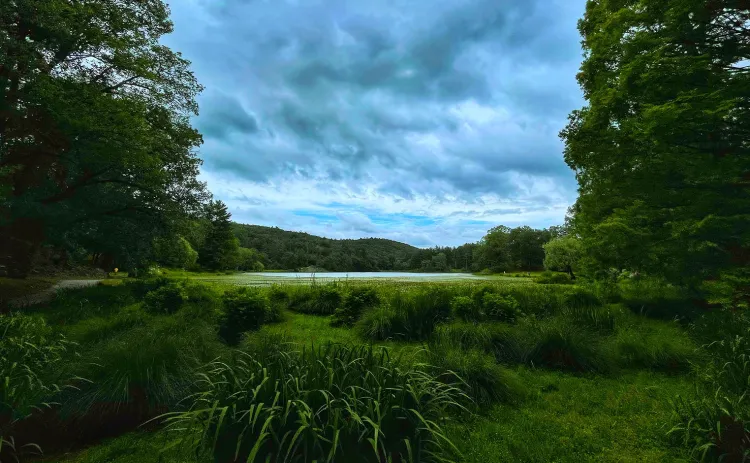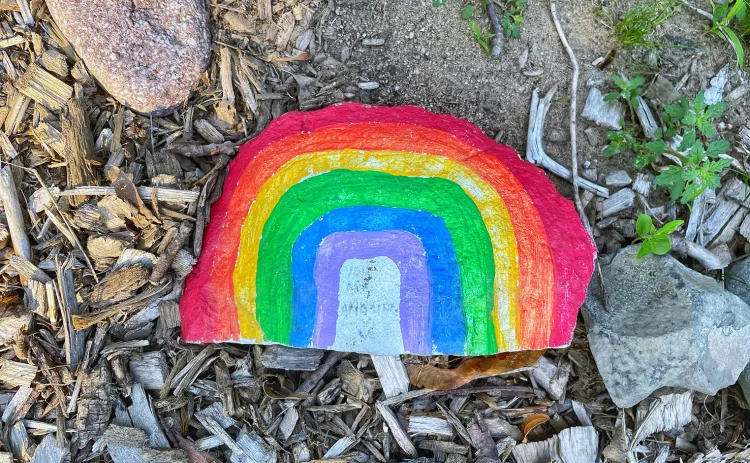Journal #3 - Budding Perspectives

In this journal, I’ll be sharing photos from my trip last weekend to Innisfree Gardens in New York.
Photo credit: Chris Stone '23 (Vietnam-virtual, SIT, summer 2021)
Howdy folx!
Woah! We’re already halfway through the program! I think I’m on a good track because I finished two of my main outputs this week: writing up a set of stakeholder interview questions and an overview of what gamification is. During my mentor meetings, we usually spend some time double-checking my work and catching up on what ICS has been up to, like conducting long-term campaigns to guarantee legal marriage equality protections. After that, we’ll casually share stories about life, culture, and identity.

Oh, to be a frog chilling on a lily pad. Photo credit: Chris Stone '23 (Vietnam-virtual, SIT, summer 2021)
I think the students are starting to warm up to one another too. I’ve begun exchanging emails and texting my classmates outside of class, both other study-abroad students from the program and the students from Vietnam too. We talk about the work we’re doing and while they send me memes, I usually respond with my own collection of photos from my walks and whatnot. I think it’s kind of cool, how a photo of a frog I saw can make someone smile (you know, assuming they like frogs, or that you, reader, also like frogs).
During our seminar this week, we took some time to learn about different Vietnamese words: famous places, cultural garments, thank you, and hello—repeat after me style. I found it was really difficult to pin down the tones so I decided to look more into both the Vietnamese language and my own cultural languages. I’m familiar with tones from Mandarin, but it quickly became clear to me that tones in Vietnamese are a whole different ball game. I looked up how the tones compare and found some cool diagrams called “tone contours” that draw them out. I ended up checking out the ones for Burmese too, though, there were much fewer studies. With how I grew up speaking Burmese, repeating my family members rather than being formally taught, I tend to give little thought to my intonation. Sometimes, I feel like speaking Burmese comes from my heart, how I feel, while Mandarin comes from my head, how I think—usually with more structured grammar or based on translating from English.

A classmate from the program told me that these gave them “peace and tranquility vibes." Photo credit: Chris Stone '23 (Vietnam-virtual, SIT, summer 2021)
We were taught that there are many ways to say hello in Vietnamese, focusing on the ones that require you to assume the age and binary gender of the person. This reminded me of a creative essay and poem collection I’d read earlier that week, by Vietnamese queer academic, translator, and artist Ly Thuy Nguyen: Fruits of the Future. They talk about finding new language to describe being non-binary, formulated out of the Vietnamese language, not just translated from English: “like queer resistance and disinheritance, inserting oneself into the origin tale.” I encourage you to read it yourself, my repeating of it will not do it justice. While I had asked my mentor for news outlets in Vietnam that would be good for helping me keep up with what’s going on locally, I also find myself tuning in more to posts like these that are shared by my friends of the Vietnamese diaspora.
There are some aspects I will never be able to relate to in that piece, not being Vietnamese myself. However, it resonated with me to reflect on my own identity. I often find myself switching to Mandarin 我 in the middle of speaking Burmese, unwilling to identify myself by gender in the first person. Spoken second-person pronouns, 她,他,它, expose no differences, only leaving me afraid to write myself down. Many of the terms used to describe LGBT+ experiences in these languages are derogatory and/or don’t conform to translations from contemporary Western terminology well. Terms that maybe once did are often lost to time.
That was why I was a bit stunned when I came across the article, “Celebrating Burmese trans identities at the Taungbyone Nat Festival helped me understand my gender” by June Bellebono, a fellow member of the Burmese diaspora. “Something that’s helped me in legitimising and understanding my identity has been learning about pre-colonial indigenous trans identities,” they said. I feel the same. In the article, they talk about “nat kadaw”-s, traditional spirit wives that are highly regarded in Burmese society even today. This is a role that is held by not only women but also trans women and those of identities that “might not fit the definition of ‘trans’ we are accustomed to”, and might have led to persecution had they not also taken on the role of a nat kadaw. I knew this dynamic existed in other cultures but not my own.
These words, Taungbyone Nat and nat kadaw, I can’t just say out of “feeling”. I’ve never heard them said by my own family, nor do I dare to ask. Still, all this was proof of, as Bellebono writes, “something that had been part of my heritage for years – it had just been hidden from me.”

A Swattie shared with me that this spot in particular kind of reminded them of Wharton, and they didn’t realize how much they missed it until I sent them the photo. Photo credit: Chris Stone '23 (Vietnam-virtual, SIT, summer 2021)
I remember sitting in Crumb Cafe late one night as a freshman, chatting with some older students with who I’d befriended. I mentioned something along the lines of how for me, gender felt like more of a cultural thing. My experience of transness manifested before I’d even learned the word in the US, yet never clicked with how it was portrayed in the US either. It almost made me wonder if I was faking it. Then one of my friends responded, “OMG, exactly, I feel the same way!” At that moment, I felt a huge sense of relief that I wasn’t the only one feeling this discomfort. I seriously miss late-night Crumb Cafe Convos.
Back then, I still didn’t know where else to look for that cultural history. Finally, I can get a glimpse into it.

A rainbow rock I found at my childhood elementary school. Photo credit: Chris Stone '23 (Vietnam-virtual, SIT, summer 2021)
Bellebono concludes the article by stating, “trans identities exist outside a Western paradigm... transness is not a new concept, and more importantly, transness does not have one look or expression.” I hope that this curriculum by ICS can also be a way to teach Vietnamese students more about transness outside of the Western paradigm and find joy within their own culture, as this experience has been helping me find joy within my own.



